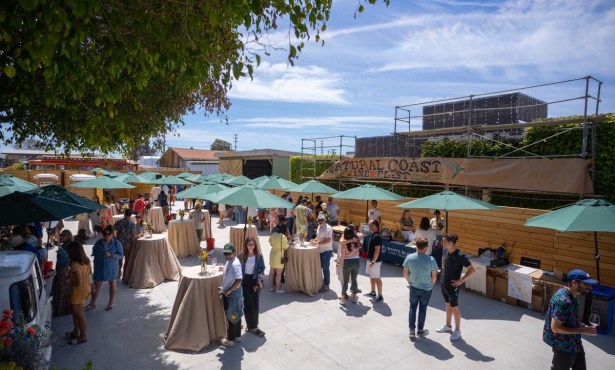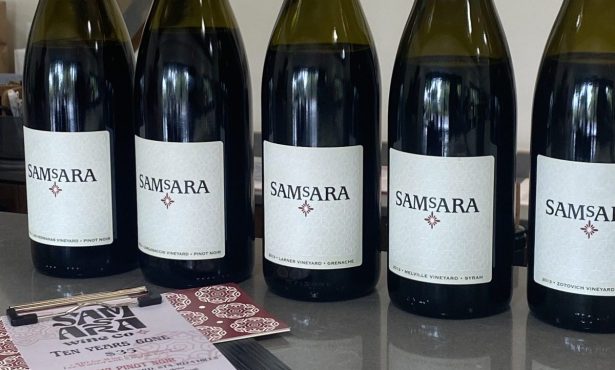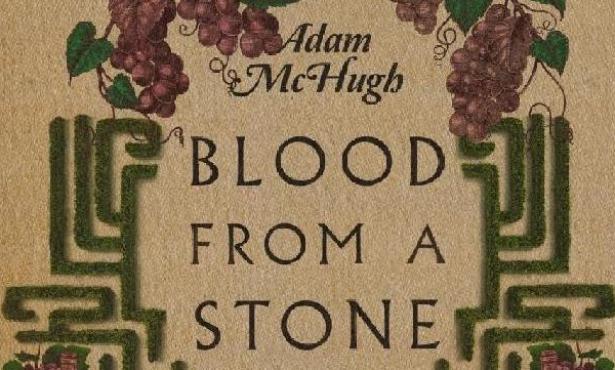Raising a Glass
Wines and weddings are a perfect match. There are few ways more
appropriate to celebrate one’s nuptials with family and friends
than by raising a glass to future joys. Before you decide upon your
wedding wines, there are a few guidelines that may help you to
navigate the sometimes choppy waters of wedding reception
planning.
You’ll want to allow for four glasses per bottle when planning
the amount of wine to be purchased. At four glasses per bottle,
that means that four guests will receive a generous pour from each
bottle. That being said, if you are expecting, say, 200 guests,
you’ll need to purchase at least eight cases, with each case
allowing for approximately 48 pours, and each guest, ultimately,
receiving two generous pours. Because some guests will not drink at
all, or some will only have one glass, while others have three
glasses each, quantities should balance out. It’s always a good
idea to purchase an extra case or two, but be careful to not buy
too much, as mindless over-drinking at receptions can be
problematic.
Following the 200-guest example, you’ll want a balance between
red and white wines. For summer weddings that may be occurring on
very hot days, you may want that extra case or two you purchase to
be white wine, as guests may desire something lighter to drink
during warm weather. Aside from wine, you may want to offer
sparkling wine, champagne, cava (Spanish sparkling wine), or
prosecco (Italian sparkling wine) while serving guests the wedding
cake. Make sure to have non-alcoholic sparkling wine on hand. Most
weddings have at least one expectant mother as a guest, and
children appreciate being included in toasts. Quantities for
sparkling wine, champagne, or cava should be lower, with only one
pour per guest—enough for a toast. For 200 guests, you would need
about four cases.
Many event sites give you the option of purchasing wine through
their caterer or business. This is certainly true for wineries.
Some even make it mandatory. If this is the case, make sure that
you are not being double-charged a corkage fee if you are
purchasing wines from your event site purveyor. If they allow you
to opt out of having to purchase their wines, or wines they carry
on their regular menus, make sure that you’re not charged too high
a corkage fee. Corkage fees should be open for negotiation, and
respectable businesses will be open to this.
Perhaps most importantly, speak to your caterer or service staff
about staggering the service of wines. You don’t want to make all
of the wine available at once by putting bottles on the tables for
guests, as you may run out of wine too quickly, and it’s hard to
monitor over-drinking when all of the wine is made available
upfront.
Lastly, it’s a faux pas to provide the wedding party table with
better wine than the rest of the guests. For a truly intimate,
friendly, and equitable wedding reception, all guests should be
served the same wines. If you want to give your wedding party
something special to taste, the rehearsal dinner is the best time
for that.
Now, for the fun part, here are a few suggestions for reasonably
priced, but delicious wines:
Bubbly
Cava is Spain’s version of champagne and is made using the same
methods as French champagne. A highly drinkable and enjoyable cava
is made by Freixenet, and comes in an elegant black bottle. It can
be found in many local stores and is delicious. Freixenet Brut,
Spain, $10 /bottle.
Prosecco is Italy’s version of sparkling wine. I love proseccos
and find that they are a great value for the quality. Many are
light, delicious, and affordable. Folonari Brio Prosecco, Italy,
$9/bottle. “Sparkling wine” is what we call champagne here in the
United States. There are some very pleasant sparkling wines
available today that are elegant and flavorful. Domaine St.
Michelle Sparkling Blanc de Blanc, Washington, $9/bottle.
Champagne: Ironically, the home of champagne has fewer,
inexpensive, delicious sparkling wines. Most attractive champagnes
begin at and above the $20/bottle mark. But here’s one that’s fun
to drink: Saint Hilaire 2002 Limoux Blanc de Blanc Brut, France,
$11/bottle.
White Wine
Happily, it’s hard to find a really bad Californian white wine
out on the market. Thanks to advancements in the cellar, most
reasonably priced white wines, barring unusual problems like cork
taint, etc. are rather appealing. Here are two choices that pair
well with salads, lighter-styled appetizers, and seafood or chicken
entrees. Camelot 2004 Sauvignon Blanc, Central Coast, $8.99/bottle;
Beckmen 2003 Sauvignon Blanc, Central Coast, $12/bottle.
Red Wine
Inevitably, at your party, you’ll have relatives present who
don’t normally drink red wine. Many will say they don’t like wines
that aren’t sweet, and that red wine is typically too bitter for
them. So, it’s important to find a red wine that is easy to drink
and has a pleasant mouth-feel. Here are two that I consistently
enjoy: Beringer 2003 Founder’s Estate Cabernet Sauvignon,
$10/bottle; Bogle 2003 Petite Sirah, $8.99/bottle.



